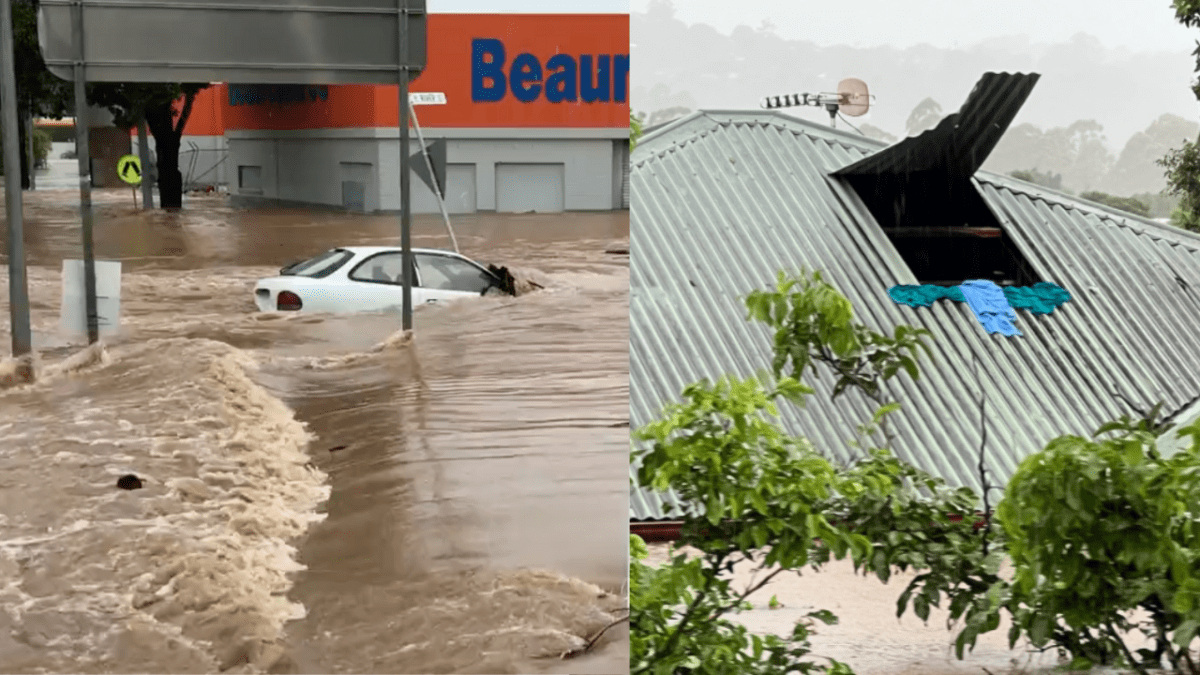
Floods, heatwaves and fires in Australia are going to get worse and more frequent according to a landmark report released by the UN’s lead climate body the Intergovernmental Panel on Climate Change (IPCC) on Monday night, even as the east coast battled record-breaking floods.
The report — the most comprehensive of its kind since 2014 — showed our minor efforts to adapt had not been not enough. Without committing to serious emissions reduction targets and stop funding coal, we could expect a fourfold increase on annual heatwave frequency and deaths, a loss of land and ocean biodiversity, and no more great Barrier Reef or snowfields.
Residents in Queensland and northern NSW have experienced the deepening impacts of climate change in real time this week. Even highly prepared flood zones were caught off-guard by unprecedented extreme weather according to people on the ground.
Lismore resident Aidan Ricketts told PEDESTRIAN.TV residents were ready for a flood, but no one predicted one that broke the previous record water levels by 2.5 metres.
“This is a community that’s known flooding, that builds to be above floods, that takes these things seriously,” Ricketts said.
“It wasn’t people making mistakes, it was people working from experience, following the data that was emerging. But this flood was so big it exceeded the capacity of the predictive agencies.”
Lismore has a State Government floodplain management plan, several flood reserves and rescue points and a planning policy that outlines flood-safe building requirements including minimum construction heights.
“My house was built to be well above the planning standard for flooding in Lismore — it was at least a metre above and it took in nearly 2.5 metres of water,” Ricketts said.
“I took my car up to a flood reserve, which has always been used as a flood-free area, and it got covered in water along with everyone else’s.”
It’s estimated Lismore’s flood peaked at 14.4 metres on Monday after more than a year’s worth of rain fell in two days.
Tens of thousands of properties have been damaged and the first Lismore death was confirmed on Tuesday afternoon. A further 400 residents were estimated to be trapped.
Right now in #Lismore… People are cutting themselves out of their homes to survive. @9NewsSyd @nbnnews @2GB873
📸@worldzonfire pic.twitter.com/yLOSnAVLmy
— Olivia Grace-Curran (@livgracecurran) February 28, 2022
Ricketts has been part of the self-organised community effort and spent Monday rescuing people from their homes in his boat.
“Every second house had people on roofs or chest-deep in water waving [for help]. I couldn’t move around because just everywhere I went people were needing rescuing.”
Resident and Resilient Lismore volunteer Maddy Braddon coordinated rescue efforts during Lismore’s 2017 floods a told PEDESTRIAN.TV the town was “very prepared” for the next.
“Everyone in those immediate areas in the flood footprint knew they would have the get their plans activated and shift their stuff upstairs and do what they could, but those plans have largely become redundant with the scale and height of the water,” Braddon said.
Because Lismore is a disaster hotspot Braddon said residents had no doubt the worsening events were caused by climate change.
“We saw the 2017 flood, we then had widespread, prolonged and devastating drought. We then had the 2019 bushfires which were devastating for our region and we had several floods which kept us on our toes after that. Then we had the pandemic, and now this,” she said.
“We do not have any more time to waste.
“Even five years on it’s devastating, but the thought of it happening in a year is just a tragedy beyond measure.”
What’s the price of petrol in #Lismore? @9NewsSyd @nbnnews pic.twitter.com/Dz1KvvjwA9
— Olivia Grace-Curran (@livgracecurran) February 28, 2022
Flooding from intense rainfall is Australia’s most expensive disaster and costs an average of $8.8 billion annually. The IPCC report said this would increase every year.
But the Coalition has continued to fund coal projects and accept donations from coal industries and Prime Minister Scott Morrison has downplayed the impacts of climate change.
“What we’ve got at the moment is not only climate inaction and climate denial but outright corruption from the Federal Government,” Ricketts said.
“The floods are getting bigger, they’re getting worse and you’re actively misleading the population if you’re telling them things are still within the range of normal. You’re putting people’s lives at risk.”
Ricketts said if this series of natural disaster wasn’t enough for the government to commit to real action on climate change, he didn’t know what would be.
“Like the fires, there’s that word unprecedented — unprecedented everywhere — I mean it’s code for climate change,” he said.
“If you don’t believe in climate change you’re asking for something even more dramatic. Like if you say this is normal, then what do you expect you’ll get when it gets abnormal?
“You’d better hope this isn’t normal.”



